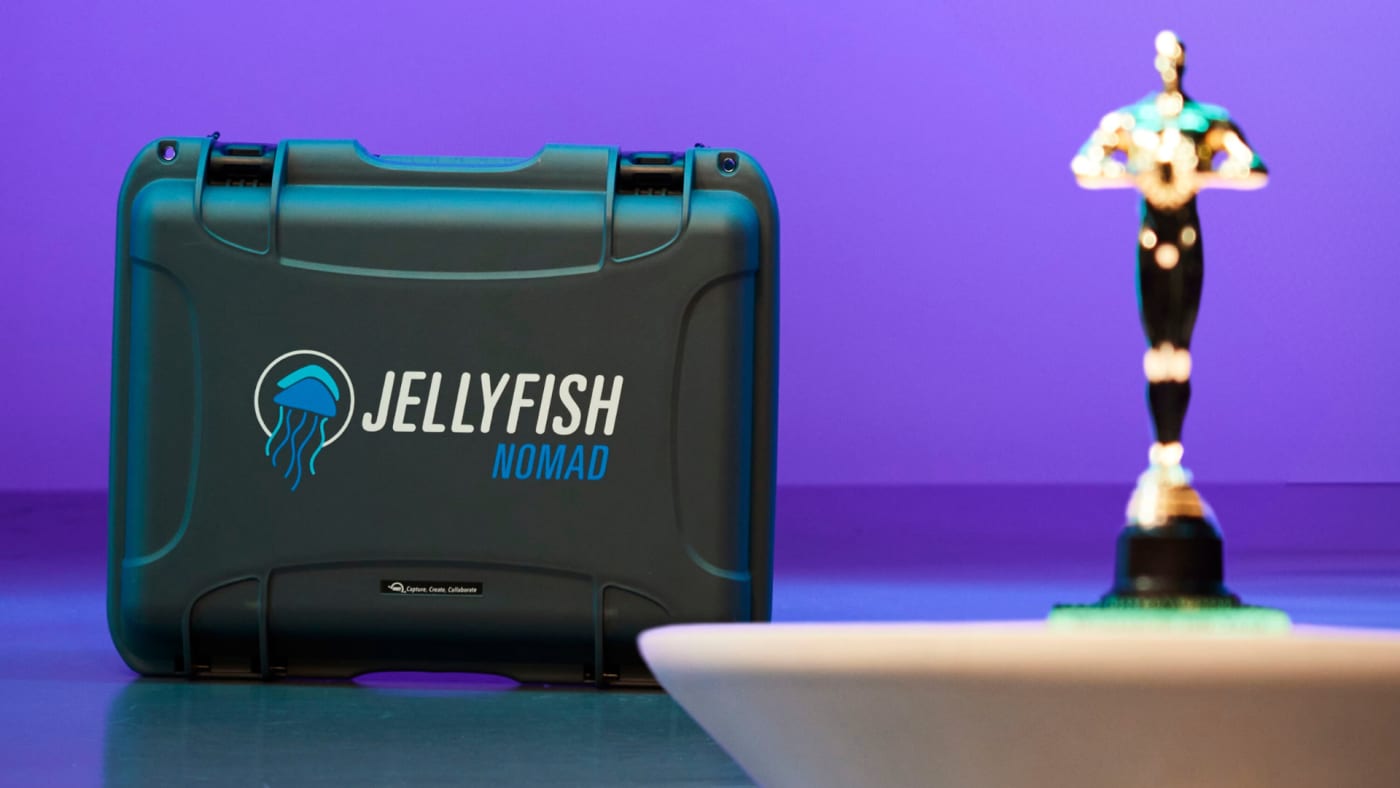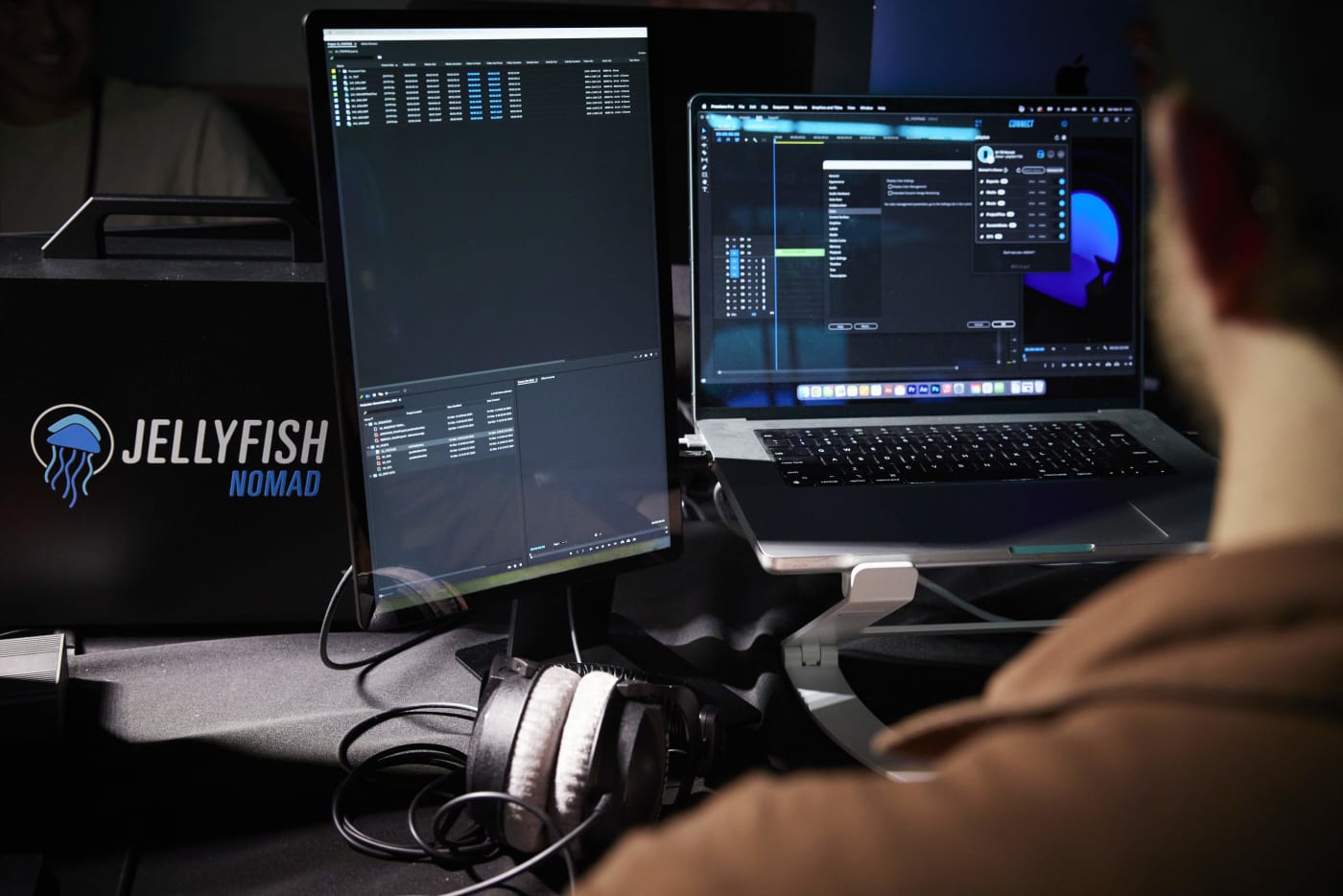Jellyfish Nomad sets the Gold Standard for Oscar Night
The Academy of Motion Picture Arts and Sciences used a combination of OWC products and Adobe Premiere to copy, sync, and edit their social media content throughout the 96th Academy Awards ceremony.
Conner Stirling • Mar 15, 2024

Glitz and glam dominated the stage at the Dolby Theatre on Sunday night, with Oppenheimer taking the coveted win for Best Picture. But behind the scenes, OWC’s Jellyfish Nomad was put through its paces by a small and efficient team of editors and shooters.
The digital video team of the Academy of Motion Picture Arts and Sciences used a combination of OWC products and Adobe Premiere to copy, sync, and edit their social media content throughout the night. OWC caught up with lead editor Jonathan Hensley to talk through their lightning-fast turnaround and why they chose to base their workflow around OWC’s Jellyfish Nomad and Adobe’s Premiere Productions.
Behind the scenes of the big night
Let’s get a good overview of the workflow to start.
Using three vertically mounted Sony FX-6’s the team captured Oscar winners as they celebrated their wins. Shooting in 4K resolution and delivery in HD allowed the team more flexibility to reframe in post.
From there, four workstations were connected directly to an OWC Jellyfish Nomad. One iMac Pro for ingest, and three MacBook Pros for one assistant editor and two editors.

SD cards were ingested through OWC’s Dual SD card reader onto the Jellyfish Nomad and sent back into circulation. Within 10 minutes, cards were offloaded, media was in Premiere Pro, and cameras synced by one Assistant Editor.
From there, Editors were able to quickly open the sequence in Premiere Productions and instantly start cutting. The goal was between 30-35 minutes from the time the cards were ejected out of the camera to a finished product.
Nomad brings the team fully online
With the speed and power of the Jellyfish Nomad, the team avoided using proxies and performed an online workflow.
Hensley notes, “I was worried we would have to do an offline workflow, so I had a Compressor Droplet waiting in the wings.” Fortunately, the Nomad delivered enough bandwidth and performance that the team could use a fully online workflow while simultaneously ingesting footage.

Last year, the same team used a Jellyfish Mobile with a similar workflow to generate content for the awards night. This year they used the newly introduced all-flash Jellyfish Nomad and noted the speed improvements. With an aggregate speed of 5,500MB/s across all users, the Jellyfish Nomad was smaller and faster than the previous generation Mobile.
The Nomad is around 40% smaller than the Jellyfish Mobile saving the team some space with a smaller footprint. With the Nomad’s all flash storage and compact form factor it also operates quietly in the same room as all three cameras during filming.
To connect all four Apple workstations, the team deployed Jellyfish Connect on each Apple MacBook Pro and iMac Pro enabling features like automatic discovery and easy setup for everyone accessing media from the Jellyfish Nomad, all without the use of a network switch.

“I’m not an IT guy, but I’m a techie editor. I was appreciative of how easy and intuitive setting up the Jellyfish is," notes Hensley. "I can’t imagine being able to get this done with this level of speed and efficiency without using Productions."
"I knew we needed a Jellyfish"
Adobe Productions enables teams to collaborate on projects instead of passing files back and forth. Using Adobe Productions enabled the team to share sequences, multi-cam clips, and presets quickly and efficiently from all workstations.
It also is meant to speed up projects with large Adobe Premiere Pro project files by breaking them into smaller chunks, something beneficial to collaborative teams as well as solo editors.
“It’s an underutilized tool in Premiere,” says Hensley. The need to use Adobe Premiere Productions led to the need for an on-premises shared storage solution. Hensley adds, “I knew we were using Adobe Premiere Productions, so I knew we needed a Jellyfish.”
 USA + International
USA + International OWC Canda
OWC Canda OWC Europe
OWC Europe